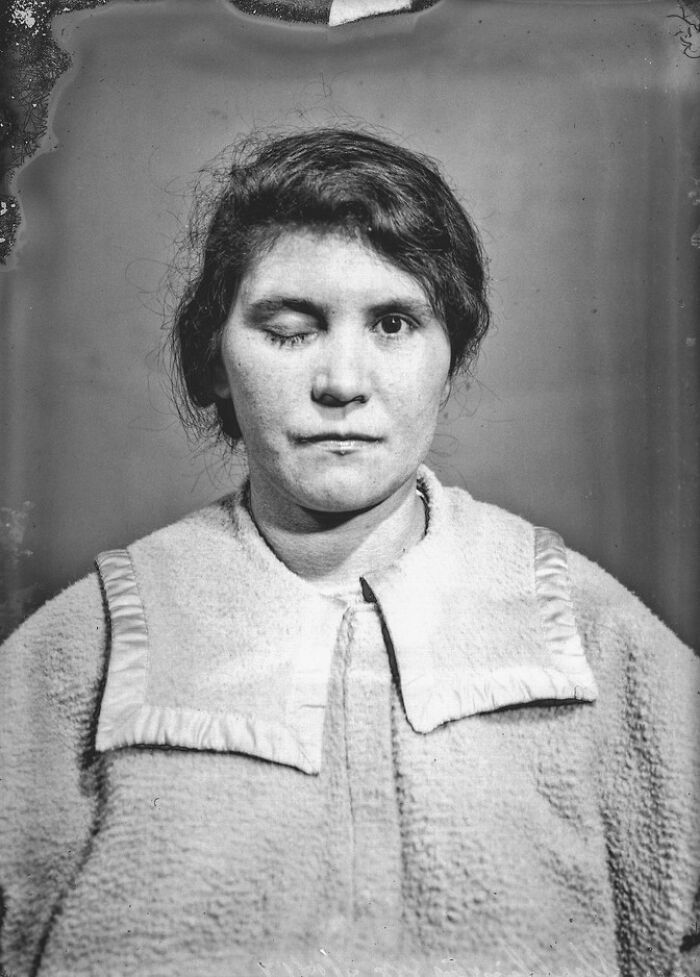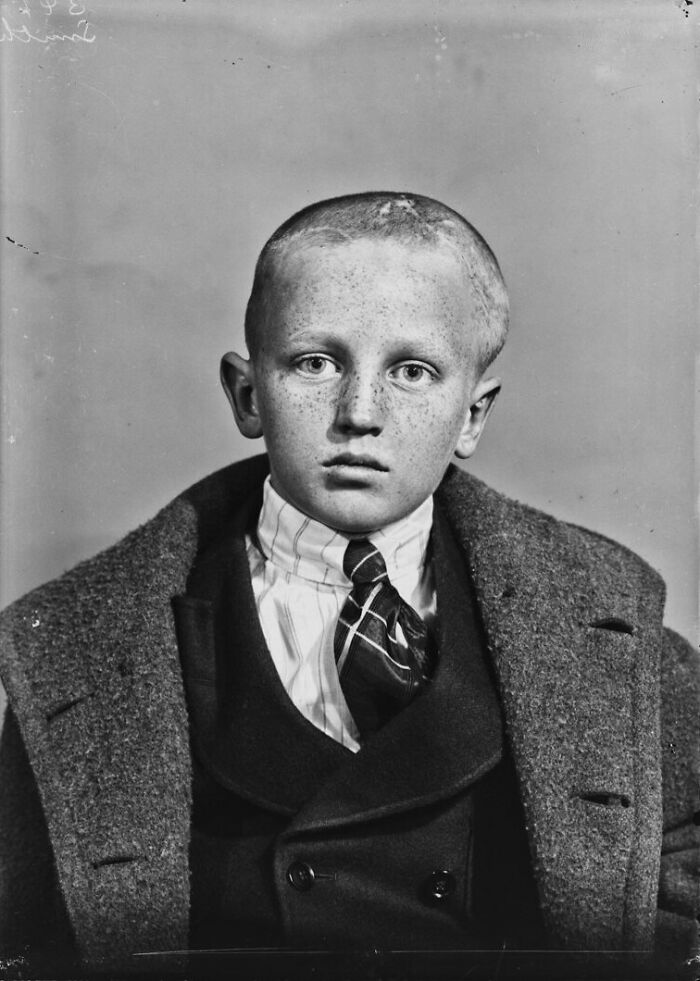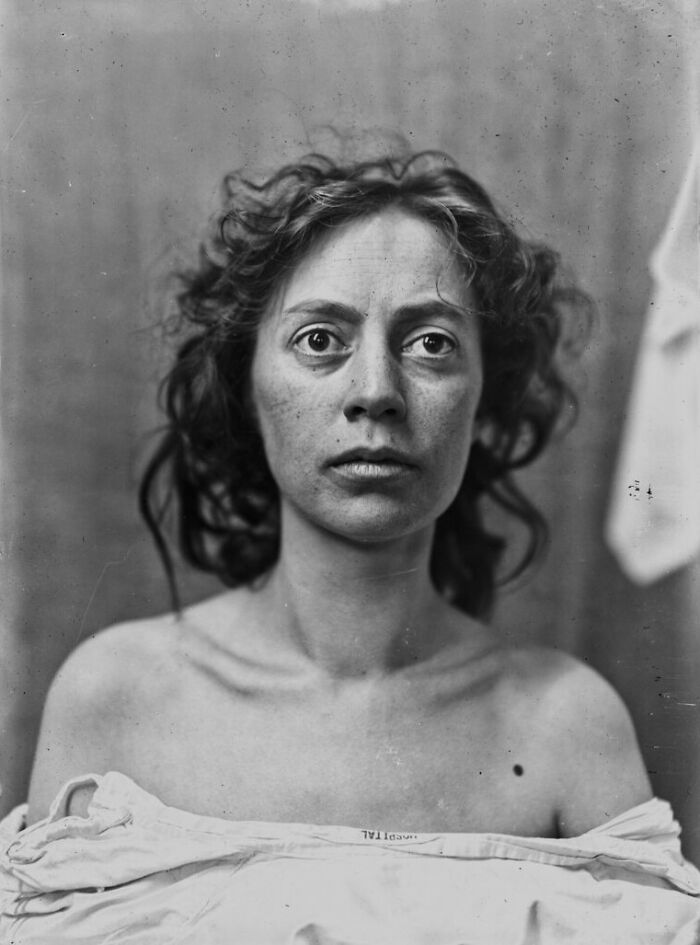Luckily, we live in a time where most diseases can be cured or controlled—to some extent, at least—and life expectancy has gone way beyond thirty. However, that wasn’t always the case and we have many people to thank for the rapid development of all sorts of medical practices.
When it comes to brain surgery, for instance, it’s Dr. Harvey Cushing who should be praised for laying the groundwork in the field. Considered to be the pioneer of neurosurgery, he was not only the first exclusive neurosurgeon, but also the first person to describe what is now known as Cushing's disease.
If you are fascinated by neurosurgery or simply someone with a curious mind, today’s list might be something you didn’t expect to see, but are eager to browse now that you’re here. Below you will find portraits of some of Dr. Cushing’s patients from back in the 20th century, so scroll down to view them, but keep in mind that some images can be somewhat disturbing.
This post may include affiliate links.
Born on the 8th of April, 1869, in Cleveland, Ohio, Dr. Harvey Cushing was one of the most prominent people in the history of neurosurgery. Considered to be the pioneer in the field, he not only performed countless operations, but took notes on them meticulously, which added to an impressive collection of neuroscience research at its early stages.
Discussing Cushing’s input in the world of neuroscience, Cohen and Gadal wrote: “For Cushing to achieve the dream of establishing and spreading his specialty through his disciples, he needed to first prove the safety of his methods. His patients therefore became the center of his career and their stories, which he carefully recorded, became the diary of neurological surgery in its infancy.”
According to a research paper on Cushing’s life and work, the father of modern neurosurgery was the youngest of ten children, who came from a family well-rooted in the world of medicine: his father, grandfather and even his great-grandfather were all general medical practitioners. With such a pedigree, it’s not surprising that Cushing, too, entered the world of medicine, graduating from Yale University in 1891, and receiving a medical degree from Harvard Medical School in 1895.
Said research paper pointed out that the details surrounding Cushing’s life and his work are particularly well documented, since he was keen on writing letters and keeping records.
A study of some of Cushing’s notes found that he had copious documentation of his own surgical mishaps as well as suggestions on how to prevent such accidents from happening in the future.
Some mistakes the surgeon documented included errors of judgment—such as the time he reportedly operated on the wrong side of a patient’s brain—as well as cases classified as “human error,” entailing such mishaps as dropping an instrument into a wound.
The names and conditions of many of these patients are still unknown. https://www.dailymail.co.uk/sciencetech/article-3090068/Brain-surgery-s-earliest-patients-revealed-Haunting-images-disfigured-skulls-brains-discovered-university-basement.html "Of the thousands of images, only a quarter, around 2,500, have been catalogued completely. Dates and subjects for these images are unknown." and 'As they are part of the medical information we cannot release the names of these patients and in most cases we are still in the process of reconnecting the patient information with the faces of the patients and in some cases whole brain and tumor wet specimens.'
At the age of 33, Cushing became an associate in charge of neurological surgery at the Johns Hopkins Hospital. That’s where he worked with trigeminal neuralgia—a condition that causes sudden and severe pain in one’s face—and began operating on brain tumor patients.
In addition to that, he became increasingly interested in the pituitary gland—a pea-sized gland located at the base of the brain—and would spend countless hours working on it both in the operating room and the laboratory. Such effort eventually led him to becoming a global authority figure in regards to matters related to trigeminal neuralgia, brain tumors, and diseases of the pituitary gland.
Might not be malignant…. Fibrous dysplasia for example likes to grow around eye sockets, not cancerous but can cause that kind of deformation. Lots of bony growths look similar on photos so no way to diagnose without imaging or a biopsy.
Load More Replies...Due to his prominent work in the field of medicine, Dr. Henry Cushing’s name can be found not only in all sorts of books and documents, but among the list of diseases, too. A condition (now known as Cushing's disease or Cushing's syndrome) that occurs when the body makes too much of the hormone called cortisol was named after the renowned surgeon, as he was arguably the first one to describe it, when he described a patient with hypercorticism back in 1912.
The names and conditions of many of these patients are still unknown. https://www.dailymail.co.uk/sciencetech/article-3090068/Brain-surgery-s-earliest-patients-revealed-Haunting-images-disfigured-skulls-brains-discovered-university-basement.html "Of the thousands of images, only a quarter, around 2,500, have been catalogued completely. Dates and subjects for these images are unknown." and 'As they are part of the medical information we cannot release the names of these patients and in most cases we are still in the process of reconnecting the patient information with the faces of the patients and in some cases whole brain and tumor wet specimens.'
Acromegly. Marfan's has "arachnodactyly" (Spider-fingers, long & thin). His fingers are thick and jaw is prominent.
While his input in the development of medicine is evident, it came at a price; some sources suggest that his devotion to neurosurgery pushed Cushing away from his family.
The surgeon would often have to leave his wife—Betsey M. Williams, who he married in 1852—and kids for long periods of time or would spend time studying and working on his notes. According to the Journal of Medical Humanities, Hektoen International, Cushing did take the time to do appendectomies on two of his kids and removed a tubercular lymph node from another.
“His oldest son died in an alcohol-related car crash; another son flunked out of Yale. One of his daughters married a son of Franklin Roosevelt. The marriages of his three daughters all ended in divorce. During his last years, Cushing was often alone and in poor health,” a piece in the magazine read in part.
Even if one eye is operated on, both eyes are covered to prevent movement. There could have been a trauma to the eyes, or an operation that needed zero movement from the eyes.
The names and conditions of many of these patients are still unknown. https://www.dailymail.co.uk/sciencetech/article-3090068/Brain-surgery-s-earliest-patients-revealed-Haunting-images-disfigured-skulls-brains-discovered-university-basement.html "Of the thousands of images, only a quarter, around 2,500, have been catalogued completely. Dates and subjects for these images are unknown." and 'As they are part of the medical information we cannot release the names of these patients and in most cases we are still in the process of reconnecting the patient information with the faces of the patients and in some cases whole brain and tumor wet specimens.'
The names and conditions of many of these patients are still unknown. https://www.dailymail.co.uk/sciencetech/article-3090068/Brain-surgery-s-earliest-patients-revealed-Haunting-images-disfigured-skulls-brains-discovered-university-basement.html "Of the thousands of images, only a quarter, around 2,500, have been catalogued completely. Dates and subjects for these images are unknown." and 'As they are part of the medical information we cannot release the names of these patients and in most cases we are still in the process of reconnecting the patient information with the faces of the patients and in some cases whole brain and tumor wet specimens.'
While it is believed that Cushing didn’t have that close of a relationship with his children, one of them—his daughter, Betsey Cushing Whitney—was the one to invest in a legacy commemorating her father, Yale’s medical library, opened back in 1941.
Cushing was reportedly the driving force persuading Yale University officials to open a medical library, which would be the heart of the medical school, where old and new collections would be equally accessible. Unfortunately, the neurosurgeon died on October 7, 1939 just days after learning that the funds to build the medical library had been allocated.
In 1990, Betsey Cushing Whitney—the widow of the former US Ambassador to the United Kingdom and publisher of the New York Herald Tribune, John Hay Whitney—donated $8 million dollars for a renovation and expansion of the library. The edifice was then renamed the Harvey Cushing/John Hay Whitney Medical Library.
A lot of these people look perfectly normal/healthy so yeah, to beat a dead horse, thanks for not telling us anything in this article. 🙄
Without context some of these photos mean nothing. A little bit about the patients condition would help immensely.
Its frustrating, but its possible that information isn't available even from the source (Yale University/Medical History Library). Lots of historical photos are taken and the context is lost to time.
Load More Replies...I‘m sorry, but this post is totally meaningless without putting information about the patient‘s conditions and how their illnesses were treated. The photos without context just makes it look like this is supposed to be some kind of freak show, which i‘m sure (and hope) wasn‘t the intention. Some of these people seem to be suffering alot. This is like exposing them to curious eyes.
This is a horribly written entry, do some proper research and try again. Seriously I googled some of these photographs and could provide better context than you have.
The names and conditions of many of these patients are still unknown. https://www.dailymail.co.uk/sciencetech/article-3090068/Brain-surgery-s-earliest-patients-revealed-Haunting-images-disfigured-skulls-brains-discovered-university-basement.html "Of the thousands of images, only a quarter, around 2,500, have been catalogued completely. Dates and subjects for these images are unknown." and 'As they are part of the medical information we cannot release the names of these patients and in most cases we are still in the process of reconnecting the patient information with the faces of the patients and in some cases whole brain and tumor wet specimens.'
Load More Replies...After a research I found that these pictures were found in Yale's sub basement and many details were lost. They show pre and post surgery patients. The collection is huge (negatives/pictures, documents and tumors/brains in jars).
I feel really weird looking at these photos without an explanation of each. Like an online version of an old time “freak show.” I stopped looking after the first five pics because I felt bad treating these people in such a sh¡tty way.
You did a disservice to Cushing and these patients. This post sucked with no context.
These certainly LOOKED interesting at first, but without an explanatory caption they were pointless. I got to #5 and then bailed out.
CON·TEXT /'käntekst/ noun - the circumstances that form the setting for an event, statement, or idea, and in terms of which it can be fully understood and assessed. Yes, I read that there is very little original information to accompany the pictures. But surely a medical or historical expert or even student can supply some explanation for the conditions visible in the pictures. Otherwise they are just viewed as gruesome pictures. Something, I am sure, the original patients or their families would not appreciate.
People are writing about context... what about consent? It's one thing to be displaying photos like these in medical journals and quite another to have them plastered all over Bored Panda.
So, I did some research on Harvey Cushing and apparently these were his patients. He was the father of modern neurosurgery. I think it's just a pic gallery.
Even as a medical professional I struggled to figure out what was happening here. I had hoped to get some information as the only time I had heard cushing's name is when I was studying a disease caused by high cortisol named after dr.cushing. (ETA: I hope some of my comments helped a little bit in why they might look the way they do.)
Without context some of these photos mean nothing. A little bit about the patients condition would help immensely.
Its frustrating, but its possible that information isn't available even from the source (Yale University/Medical History Library). Lots of historical photos are taken and the context is lost to time.
Load More Replies...I‘m sorry, but this post is totally meaningless without putting information about the patient‘s conditions and how their illnesses were treated. The photos without context just makes it look like this is supposed to be some kind of freak show, which i‘m sure (and hope) wasn‘t the intention. Some of these people seem to be suffering alot. This is like exposing them to curious eyes.
This is a horribly written entry, do some proper research and try again. Seriously I googled some of these photographs and could provide better context than you have.
The names and conditions of many of these patients are still unknown. https://www.dailymail.co.uk/sciencetech/article-3090068/Brain-surgery-s-earliest-patients-revealed-Haunting-images-disfigured-skulls-brains-discovered-university-basement.html "Of the thousands of images, only a quarter, around 2,500, have been catalogued completely. Dates and subjects for these images are unknown." and 'As they are part of the medical information we cannot release the names of these patients and in most cases we are still in the process of reconnecting the patient information with the faces of the patients and in some cases whole brain and tumor wet specimens.'
Load More Replies...After a research I found that these pictures were found in Yale's sub basement and many details were lost. They show pre and post surgery patients. The collection is huge (negatives/pictures, documents and tumors/brains in jars).
I feel really weird looking at these photos without an explanation of each. Like an online version of an old time “freak show.” I stopped looking after the first five pics because I felt bad treating these people in such a sh¡tty way.
You did a disservice to Cushing and these patients. This post sucked with no context.
These certainly LOOKED interesting at first, but without an explanatory caption they were pointless. I got to #5 and then bailed out.
CON·TEXT /'käntekst/ noun - the circumstances that form the setting for an event, statement, or idea, and in terms of which it can be fully understood and assessed. Yes, I read that there is very little original information to accompany the pictures. But surely a medical or historical expert or even student can supply some explanation for the conditions visible in the pictures. Otherwise they are just viewed as gruesome pictures. Something, I am sure, the original patients or their families would not appreciate.
People are writing about context... what about consent? It's one thing to be displaying photos like these in medical journals and quite another to have them plastered all over Bored Panda.
So, I did some research on Harvey Cushing and apparently these were his patients. He was the father of modern neurosurgery. I think it's just a pic gallery.
Even as a medical professional I struggled to figure out what was happening here. I had hoped to get some information as the only time I had heard cushing's name is when I was studying a disease caused by high cortisol named after dr.cushing. (ETA: I hope some of my comments helped a little bit in why they might look the way they do.)

 Dark Mode
Dark Mode 

 No fees, cancel anytime
No fees, cancel anytime 


































































